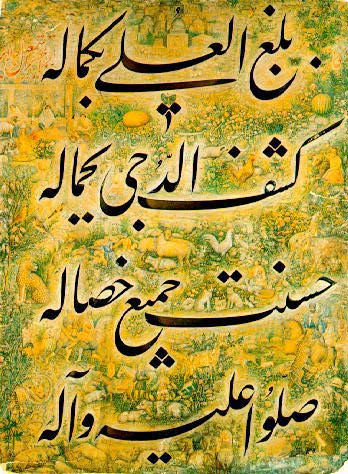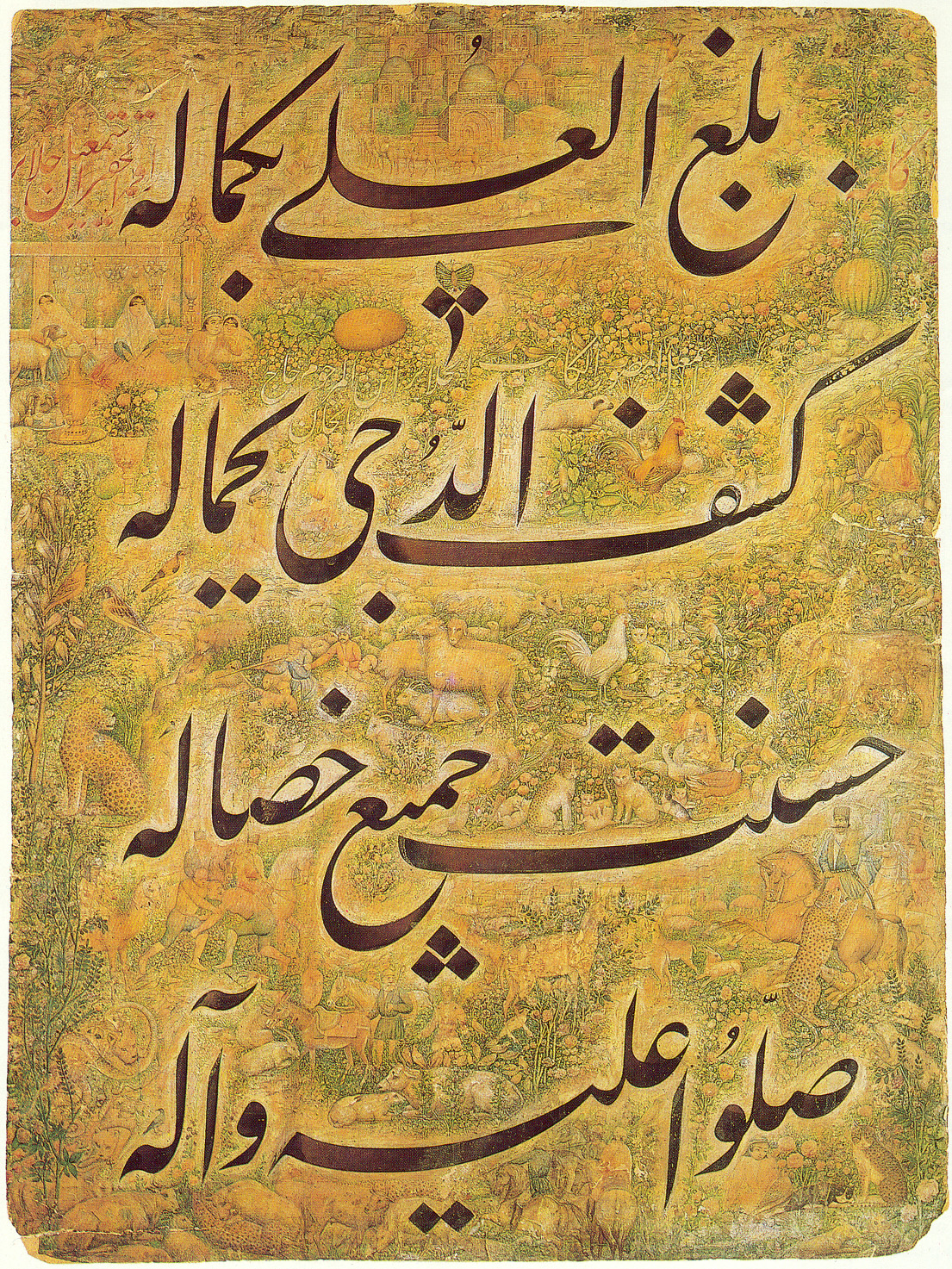

Calligraphy on a teeming background (Iran, c.1860)
Source: http://islamicart.com/main/calligraphy/catalog/iran.htm
(downloaded May 2000)
"Iran, circa 1860 AD. Calligraphy on a decorated background. Ink and gouache on paper stuck on cardboard. Traces of gold. Diam 10 3/4 in. Geneva, collection Jean-Paul Croisier, Geneva (1984), n° 2; Falk (1985), 208, p. 216.
The background of this page is so extensively decorated that the animals, plants
and human figures merge into an all-embracing pattern of green and gold. The
script is written in bold Nasta'liq which, like the painting, is the work of
the artist whose name appears twice, Ismail al-Musawwir al-Katib Jalayir, son
of the late Hajj (Muhammad) Zaman Khan. Many examples of Ismail Jalayir's work
exist, though none is dated. He died apparently sometime in the 1870's. He was
a student at the Dar al-Funun (Academy of Fine Arts), Tehran, where he came
to the attention of Nasir ad-Din Shah (1848-1895) and one of his ministers,
Prince Ali Quli Mirza. He studied calligraphy under Mirza Ghulam Riza, one of
the leading masters of the day, and this perfectly composed piece shows the
heights he reached in that art. The verse refers to Islam's greatest final prophet
Mohammed:
His perfection procured exaltation,
His beauty dispelled the darkness,
All his attributes were good ones,
Pray for him, and for his family.
[the quatrain is from the Gulistan of Sa'adi]"
